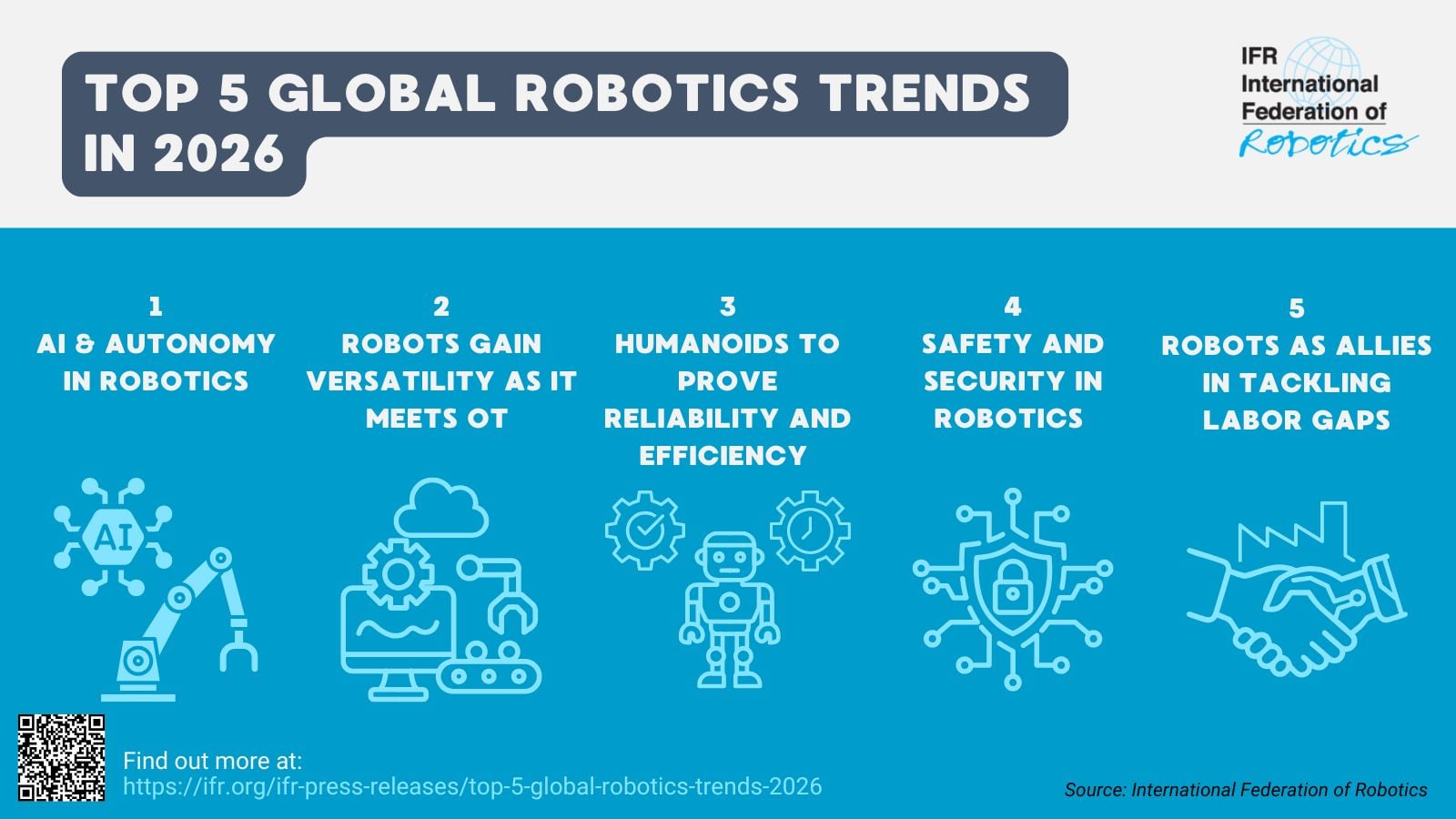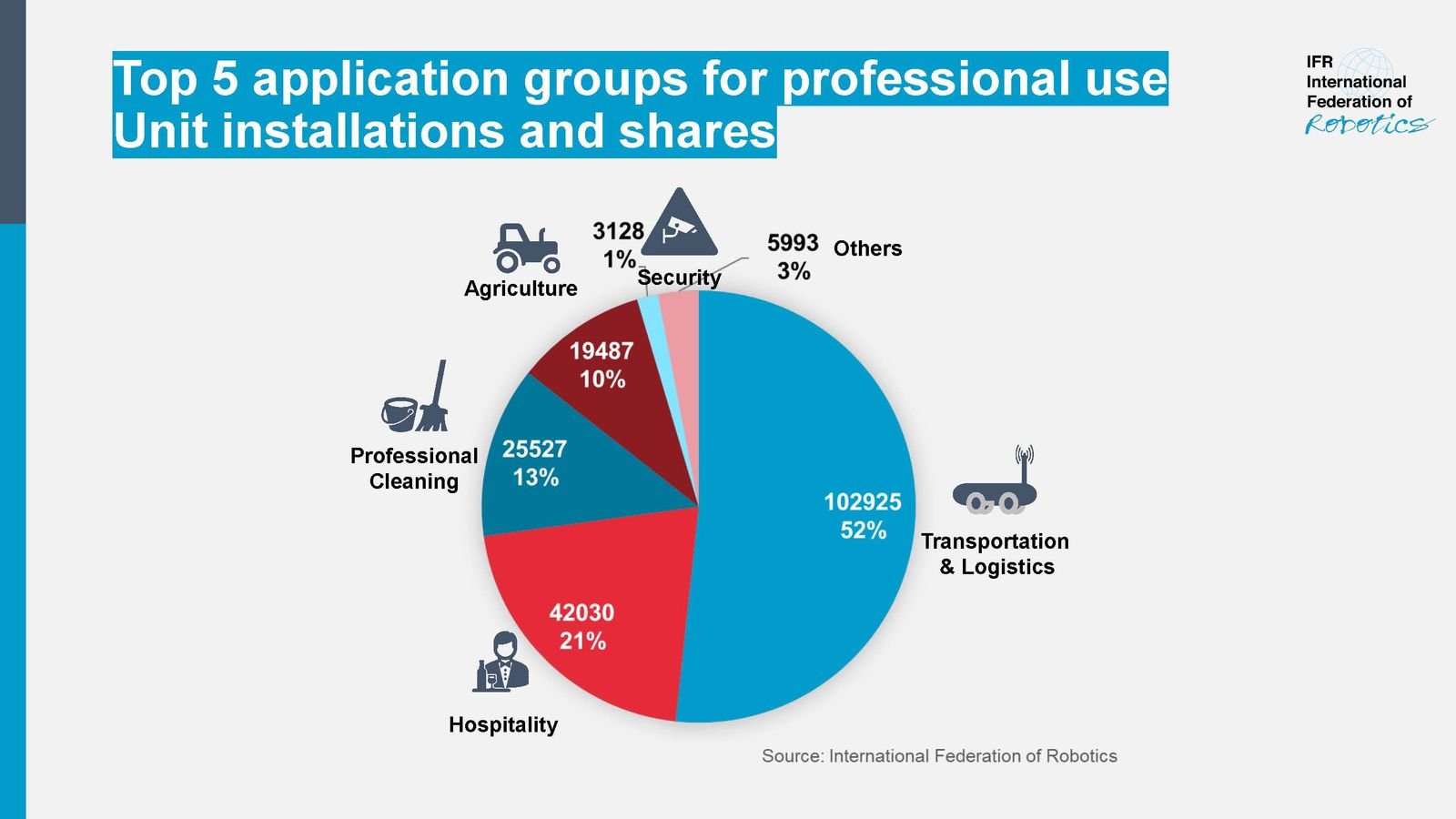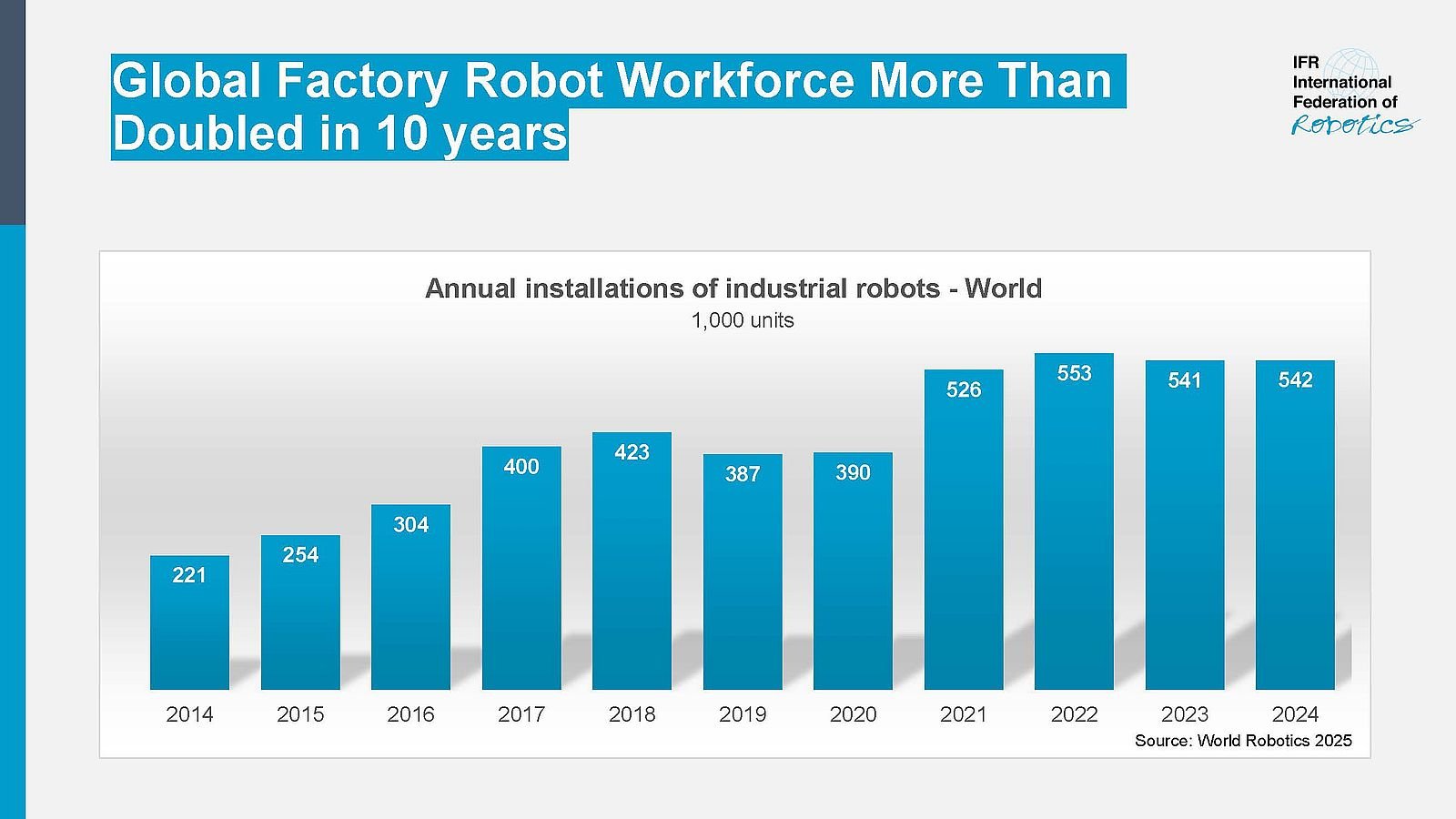
Top 5 Robot Trends 2022
Robots with new features capture new areas

Cleanfix - RA 660 - ANT driven cleaning a floor © BlueBotics
“Transformation for robotic automation is picking up speed across traditional and new industries,” says Milton Guerry, President of the International Federation of Robotics. “More and more companies are realizing the numerous advantages robotics provides for their businesses.”
1 - Robots adopted by new industries
Segments that are relatively new to automation are rapidly adopting robots. Consumer behavior is driving companies to address demand for personalization of both products and delivery.
The e-commerce revolution was driven by the pandemic and will continue to accelerate in 2022. There are thousands of robots installed worldwide today that did not exist in this segment just five years ago.
In an effort to address labor shortages, companies that have not previously considered automation will reconsider. Businesses that rely on service workers, such as retail and restaurants, are unable to fill job openings, and as a result, we can expect to see them invest in automation to meet patrons’ needs. Relatively new robotics customer industries like delivery and logistics, construction, agriculture and many more benefit from technologies advancing by the day.
2 - Robots easier to use
Implementing robots can be a complex task, but new generations of robots are easier to use. There is a clear trend towards user interfaces that allow simple icon-driven programming and the manual guidance of robots. Robot companies and some 3rd party suppliers are bundling hardware packages together with software to ease implementation. This trend may seem simple, but offerings that focus on complete ecosystems are adding tremendous value by reducing the effort and the time to operation.
The trend for low-cost robotics also comes with easy setup and installation, with specific applications pre-configured in some instances. Suppliers offer standard programs combined with grippers, sensors, and controllers. App stores provide program routines for various applications and support lower-cost robot deployment.
3 - Robots and Humans up-skilling
More and more governments, industry associations, and companies are seeing the need for basic robot and automation education at an early stage for the next generation. The journey of data-driven production lines will focus on education and training. In addition to the training of workers in-house, external education routes can enhance staff learning programs. Robot manufacturers like ABB, FANUC, KUKA, and YASKAWA all register between 10,000 and 30,000 participants in their robot classes across more than 30 countries every year.
Robotics is changing job profiles of factory workers for the better. As the recent “Great Resignation” shows, people want to work in a modern environment where they can build a career. New training opportunities with robotics are a win-win strategy for companies and employees alike: Dull, dirty, and dangerous tasks get automated while people learn key skills for the industrial workplace of the future and increase their earning potential throughout their careers.
4 - Robots secure production
Trade tensions and COVID-19 are driving manufacturing back closer to the customer. Supply-chain issues lead companies to consider nearshoring with automation as a solution.
One particularly revealing statistic from the US shows how automation is helping businesses get back to business: According to the Association for Advancing Automation (A3), robot orders in the United States in the third quarter of 2021 were up 35% over the same period in 2020. More than half of the orders are from non-automotive sectors.
And this record growth isn’t just robotics either—machine vision, motion control, and motors are also seeing big increases. “The pandemic and the resulting disruptions to supply chains and labor availability appear to have been the push that many needed to justify the investment,” says Dr. Susanne Bieller, General Secretary of the IFR. “The companies most likely to invest in automation are those that have been considering it for a while but just hadn’t taken the final step.”
5 - Robots support digital automation
In 2022 and beyond, we see an emphasis on data as key enablers of future manufacturing. Data collected from intelligently automated processes will be analyzed by producers to make more informed decisions. With a robot’s ability to share tasks and learn through AI, companies can also adopt intelligent automation more easily in new environments, from construction to food and beverage packaging facilities to healthcare labs.
AI for robotics is maturing and learning robots are becoming mainstream. The industry is past the pilot phase, and we can expect to see a larger deployment of these technologies in 2022.
Press contact
econNEWSnetwork
Carsten Heer
phone +49 (0) 40 822 44 284
E-Mail: [email protected]
Videos on YouTube
Downloads
Further robot pictures are availabe for download at our press area.





